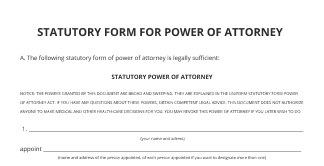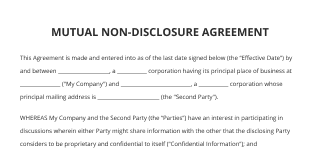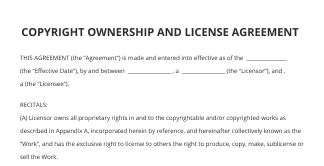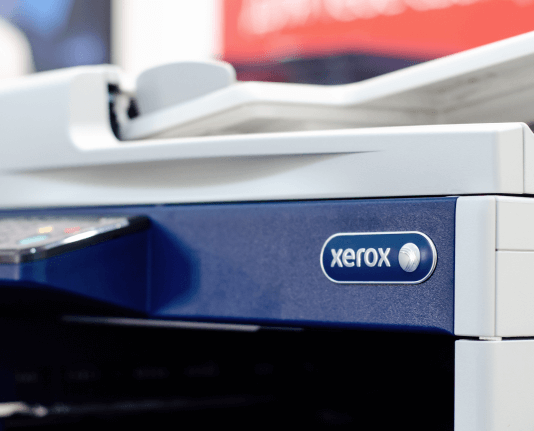Découvrez Le Meilleur Exemple De Facture Pour Entrepreneur Dans Le Secteur De La Construction
Faites avancer votre entreprise avec la solution de signature électronique airSlate SignNow
Ajoutez votre signature juridiquement contraignante
Intégrez via l'API
Envoyez des documents conditionnels
Partagez des documents via un lien d'invitation
Gagnez du temps avec des modèles réutilisables
Améliorez la collaboration d'équipe
Découvrez les signatures électroniques airSlate SignNow en action
Solutions airSlate SignNow pour une meilleure efficacité
Les avis de nos utilisateurs parlent d'eux-mêmes






Pourquoi choisir airSlate SignNow
-
Essai gratuit de 7 jours. Choisissez le forfait dont vous avez besoin et essayez-le sans risque.
-
Tarification honnête pour des forfaits complets. airSlate SignNow propose des abonnements sans frais supplémentaires ni frais cachés lors du renouvellement.
-
Sécurité de niveau entreprise. airSlate SignNow vous aide à respecter les normes de sécurité mondiales.

Exemple de facture pour l'industrie de la construction
Dans l'industrie de la construction d'aujourd'hui, la gestion de la documentation telle que les factures d'entrepreneurs est cruciale. Utiliser une plateforme comme airSlate SignNow peut rationaliser ce processus de manière significative. Avec son interface conviviale et ses fonctionnalités puissantes, les entreprises peuvent facilement créer, signer et gérer leurs documents efficacement.
Exemple de facture pour l'industrie de la construction
- Ouvrez votre navigateur et accédez au site web d'airSlate SignNow.
- Inscrivez-vous pour un essai gratuit ou connectez-vous à votre compte existant.
- Téléchargez le document que vous souhaitez signer ou distribuer pour signatures.
- Si vous prévoyez d'utiliser le document à nouveau, envisagez de l'enregistrer en tant que modèle.
- Accédez à votre document et modifiez-le en ajoutant des champs pour les informations ou signatures.
- Signaturez votre document et saisissez les champs de signature désignés pour les autres.
- Cliquez sur 'Continuer' pour configurer et envoyer une invitation à la signature électronique.
airSlate SignNow offre des avantages, notamment des rendements élevés sur investissement grâce à ses fonctionnalités complètes qui s'adaptent à votre budget. Il est conçu pour les petites et moyennes entreprises, garantissant facilité d'utilisation et évolutivité.
Avec une tarification claire et sans frais cachés, ainsi qu'un support exceptionnel disponible 24h/24 et 7j/7 pour tous les plans payants, airSlate SignNow se présente comme un choix de premier ordre pour les entreprises. Essayez-le dès aujourd'hui pour une gestion transparente de vos documents !
Comment ça marche
Fonctionnalités airSlate SignNow appréciées par les utilisateurs
Obtenez des signatures juridiquement contraignantes dès maintenant !
FAQ construction invoice example
-
Qu'est-ce qu'un exemple de facture pour entrepreneur dans le secteur de la construction ?
Un exemple de facture pour entrepreneur dans le secteur de la construction est un modèle qui décrit les détails de paiement pour les services rendus par les entrepreneurs. Il comprend généralement des sections pour la main-d'œuvre, les matériaux, le coût total et les conditions de paiement. Cet exemple aide les sous-traitants à assurer clarté et professionnalisme dans la facturation des clients. -
Comment airSlate SignNow peut-il rationaliser le processus de facturation des entrepreneurs ?
airSlate SignNow rationalise le processus de facturation des entrepreneurs en permettant aux utilisateurs de créer, envoyer et signer électroniquement des factures rapidement. Avec des modèles personnalisables comme un exemple de facture pour entrepreneur dans le secteur de la construction, vous pouvez réduire le temps de traitement et améliorer la satisfaction client. Cette solution garantit que vos documents sont toujours professionnels et juridiquement contraignants. -
Y a-t-il des coûts associés à l'utilisation d'airSlate SignNow pour les factures d'entrepreneurs ?
Oui, airSlate SignNow propose des plans tarifaires compétitifs adaptés aux besoins des entreprises, y compris des fonctionnalités spécifiques pour les factures d'entrepreneurs. En utilisant un exemple de facture pour entrepreneur dans le secteur de la construction, vous pouvez économiser du temps et des ressources tout en maintenant des coûts globaux faibles. Consultez notre page tarifaire pour plus d'informations sur les options d'abonnement. -
Quelles fonctionnalités airSlate SignNow offre-t-il pour les factures d'entrepreneurs ?
airSlate SignNow offre diverses fonctionnalités telles que des modèles de factures personnalisables, des signatures électroniques et des flux de travail automatisés. En utilisant un exemple de facture pour entrepreneur dans le secteur de la construction, vous pouvez facilement créer des factures conformes aux normes du secteur. Ces fonctionnalités améliorent la précision et l'efficacité de votre processus de facturation. -
Puis-je intégrer airSlate SignNow avec d'autres outils comptables ?
Oui, airSlate SignNow peut être intégré avec des outils comptables populaires comme QuickBooks et Xero. Cette intégration vous permet de gérer vos finances de manière fluide tout en utilisant un exemple de facture pour entrepreneur dans le secteur de la construction. Ces connexions améliorent votre flux de travail en réduisant la saisie manuelle des données et en améliorant la précision. -
Quels sont les avantages d'utiliser un exemple de facture pour l'industrie de la construction ?
L'utilisation d'un exemple de facture pour l'industrie de la construction garantit que vos factures sont détaillées et conformes aux normes du secteur. Les avantages incluent des paiements plus rapides, une meilleure gestion de la trésorerie et une image professionnelle auprès des clients. De plus, des factures standardisées réduisent les erreurs et améliorent la communication avec les clients. -
Comment airSlate SignNow améliore-t-il les relations avec les clients en matière de facturation ?
airSlate SignNow améliore les relations avec les clients en offrant un processus de facturation transparent et efficace. Avec un exemple de facture pour l'industrie de la construction, les clients reçoivent des factures claires et professionnelles qui détaillent tous les frais. Cette clarté favorise la confiance et peut conduire à des cycles de paiement plus rapides. -
Est-il facile de personnaliser un exemple de facture pour l'industrie de la construction dans airSlate SignNow ?
Oui, personnaliser un exemple de facture pour l'industrie de la construction dans airSlate SignNow est simple. La plateforme vous permet de modifier facilement les modèles pour refléter votre image de marque et vos services spécifiques. Cette flexibilité vous aide à maintenir une apparence professionnelle tout en répondant aux besoins uniques de votre entreprise.
Ce que disent les utilisateurs actifs — construction invoice example
Recherches associées à construction invoice example
Contractor invoice example for Construction Industry
Hello, and thanks for joining me for this month's Jonas masterclass. For those that don't know me, my name is Bogden and I'm an account executive here at Jonas construction software and I am the host of The Jonas masterclass series. The reason I host these webinars is in order to educate viewers on best practices in the construction industry as well as how our software can help automate and streamline your business. So before we start today's Master Class, let's run through some quick housekeeping guidelines. So first and foremost, everyone is muted for the duration of the presentation for a better listening experience. Secondly for any questions, please use the questions bar as shown on the right hand side and I'll be taking questions at the end of the presentation. And lastly the presentation is going to be recorded and sent out to all attendees. So if you're unable to stay for the full 30 minutes, no worries, you'll get a copy of the recording email directly to you. All right. So for those joining me for the first time today, let me take a brief moment to talk about what our software is designed to do. So Jonas provides an all-in-one fully integrated servicing construction management software solution that is designed to take you from quote to financials across one-time Services maintenance contracts and construction projects. It covers the entire scope of the end-to-end construction business process which includes the preparation. Setting up and tracking your customers and suppliers as well as your projects work orders and maintenance contracts. Processing which provides you with the tools to manage and schedule your projects both from the office and from the field. And the subject of today's masterclass billing whether you're doing progress billing tnm or Cost Plus. It handles any type of billing that you can throw it. And finally everything ties into your accounting giving you a holistic view of your business through powerful reporting and financials. And because everything is all Under One Roof and all the field apps are integrated into the back office you now have less data entry less human error for things like allocating to the wrong job or the wrong accounts and much more powerful reporting. So in short Jonas is a true all-in-one. Software solution that can help streamline every aspect of your construction or service based business all in one software package. Our software is designed to serve a wide range of Industries everything from mechanical contractors electrical plumbing and HVAC contractors to symbol and heavy Highway as well as specialty contractors. So for today's Master Class, we'll be continuing our conversation on construction building methods and best practices. In our last masterclass, we covered progress billing which is an invoicing practice of billing incrementally throughout the duration of a project. Today we'll dig deeper into two similar contract pricing structures that are common in the construction industry, which are tnm and Cost Plus billing. Both are very similar in the way that they are structured and both allow for increased flexibility for billing when the scope of work for a project isn't clearly defined or when it is difficult to establish a firm estimate. So we'll start off the masterclass by defining tnm and Cost Plus billing as well as discussing the similarities and differences. We'll also discuss the pros and cons of each. And then we'll jump into Jonas and walk through how we can set up a job to accommodate both of these pricing structures defining all the rules and markups in the job profile. And once we've set up the billing rules, we'll walk through the process of billing each type of job and discuss the workflows and best practices in Jonas. So let's go ahead and jump right into it. So tnm and Cost Plus contracts are two ways businesses particularly in the in the construction industry Bill clients for projects. And both contract types are useful when it's difficult to determine a Project's final cost before work begins. Rather than establishing a fixed price for a project. Both contracts stipulate hourly wages for labor materials required for the job and any Associated indirect costs and the complete estimate is left open to allow for flexibility. Should the scope or duration of the project change. The difference between the two is in the way each accounts for profit. So in tnm or time and material contracts as the name implies the contractor and client agree on the goal of the project and specify the finished product. Then the contractor establishes the hourly labor labor rates for both employees and Subs as well as the cost of materials with a specified markup. Then payment Milestones are set and invoicing is relatively quick and easy since rates are already predetermined. A T&M contract may also sometimes include a not to exceed clause which sets a ceiling for the maximum number of labor hours. Should the project grow. The price of the entire project may also be capped as well. Now in Cost Plus contracts instead of charging a markup on labor materials, the contractor adds a separate percentage or set fee to the cost of the project for overhead or other expenses. So in this way instead of building profits into expenses the contractor bills for the actual costs plus it's profit. Hence the name. A Cost Plus contract may also include Financial incentives for specific performance targets if the completed work meets or exceeds expectations. Now, let's take a look at some of the pros and cons of tnm and Cost Plus billing. So the biggest benefit of tnm and Cost Plus is definitely the added flexibility which protects both the contractor and the client. Adjustments are easy when the specs are resources need to change since there's no clearly defined scope. There's also fewer risk for the contractor as the customer will reimburse them for most of the cost incurred during the project which includes any unforeseen issues and any cost overruns. If cost for material labor and other expenses Spike, the contractor can also build the client for the increases rather than having to absorb them. But only if the contracts stabilates this and this leads to another benefit which is a focus on higher quality work because the contractor no longer has to focus on cost. If anything there's actually less incentive to cut costs because the profit can be based on the percentage of the projects total fee. Both contract types also had added have added cost transparency. In order to get reimbursed the contractors most clearly document and justify their costs every cost from Material invoices to timesheets need to be collected accounted for and proven to the customer. And last but not least another benefit of tnm and Cost Plus contracts is the fact that they can ensure guaranteed and predictable profit as all the costs have the potential to be reimbursed and the profit is already accounted for either through a percentage markup on the costs or fixed theme. However, both contract types aren't without their disadvantages. So because of contractor is required to justify why expenses are related to a project this requires additional effort to keep track and manage documentation for all the expenses. So for disorganized contractors tnm and Cost Plus contract contracts can create some serious problems. In addition if the contractors profit is based on a percentage of the Project's total fee any mist or mismanaged expenses can actually decrease profit. Customers can also be very picky about which cost they'll cover and disputes can arise when trying to recover construction related expenses, which is another drawback of T&M and Cost Plus contracts. Another drawback is reduced cash flow. So typically contractors will need to front their own costs for tnm and Cost Plus projects and considering how problematic cash flow could be in the construction industry. This can be a major challenge especially for smaller contractors. And lastly because these types of contracts have open-ended Scopes the work may take longer to complete and there is less incentive for contractors to be cost efficient as the profit is already locked into the contract. So now that we've defined both tnm and Cost Plus contracts and discuss their benefits and drawbacks. Let's jump into Jonas and walk through setting up a T&M and Cost Plus job and billing it. All right. So here we are in the Jonas Cloud Suite. When it comes to doing tnm and Cost Plus billing, it's really important to ensure that you document every cost and keep records of all your time sheets expenses and all relevant paperwork. This is why I fully integrated system like Jonas can help you streamline this process and ensure that nothing ever falls through the cracks. All the transactions that are entered through the field apps or in the core system will flow directly into your billing. So in order to generate a T&M or Cost Plus billing we'll first need to set up our job profiles that we can establish the markup rules for a jobs. So this will be done in the job profile screen which can be found in the job billing and the construction management menu. So in this screen, we can establish all of our markup rules for our jobs, whether they're tnm Cost Plus or construction management job. So for this masterclass I've set up two jobs. One is a tnm job that's going to be invoice regularly and one's a Cost Plus job. That's going to be progress build. So we'll walk through billing out each of these jobs. So in this screen you can Define all the markups for your jobs. So you're gonna be able to go in and you can establish a default markup on the entire the entirety of the job. You can also set construction management fee that's going to go on top of the default markups. And that's that can be based on the markup plus the cost or just the cost of the job. And then you can also establish which billing method you're going to use. So for this tnm job, I'm just gonna do a regular tnm invoice. But if you were doing progress billing you can also select progress as the billing method. And then one of the time saving features of Jonas is the ability to actually copy these rules from a template job. So if you wanted to set up a template job and and copy over the details into your new job, you can actually go in this copy menu and you can select which particular rates or details. You want to copy over into your new job. Now Jonas is very flexible with how you can mark up your jobs. So you can go in and you can mark up your cost types. So if you wanted to put you know markup on all material and all equipment charges or on all labor, you can actually go in and you can select which cost type you want to mark up and then it's gonna pull in all the transactions for that cost type and it's gonna mark it up. So for this tnm job, I am marking up the materials at 15% and the equipment usage and then For the labor. I actually have specific occupation codes that I've pulled in from my payroll module and I have the charge out rates already established. So I have the regular overtime double time rates and You can do this, you know for each separate occupation code or you can also go in and you can establish just a general markup on you know, the cost of all your labor. You can also markup cost items or cost codes. So if you want to have separate markups for different cost items you can go in here and you can specify unique markup on each cost item. And then for any non-recoverables, if you have any expenses that you're not going to be building the customer for so these might be entertainment expenses or lunch expenses that you know, you're not going to be reimbursed for you can filter them out here and select which ones you're not going to be pulling into your billing. So this will actually, you know, not take those transactions and and Bill your customer for it. And so once you set up all of these details, you can then proceed to pull in all the transactions for a certain date range. But before I do that, I just want to quickly also show The Cost Plus job that I set up. So here's the Cost Plus job that I've set up and the difference here being that I set up an overall default markup percentage on the entire cost of the job. So I didn't break out any, you know granular markups on the cost types or cost items or labor or materials and equipment. I just have a default markup setup. And then I've also changed the billing method to progress billing. So we'll walk through how you can actually pull in all your transactions and how you can update your progress on the job and get your progress billing out in for a tnm or Cost Plus job. All right. so the next step to doing your Cost Plus or tnm billing is to go and prepare your Billings. so in this screen this allows you to prepare the detail lines you wish to invoice so you can select a range of cost items. Or you can select selected cost items and you're going to be selecting a date range for how you want to pull in all of the transactions. So a best practice for this would be to select the starting date of your job. Up to the period for which you wish to build. And then this way when you're doing, you know, when you're preparing your Billings any transactions any payable invoices equipment charges or payroll time that's backdated won't be missed for subsequent Billings. So I'm gonna go ahead I'm going to pull in all the buildings for this date range and it's going to create a new batch for me. and then if I go in and I view the audit Trail here is a summary of all the transactions that it pulled in for this current batch. So once we've pulled in all the transactions, you can also go in and you can edit the Billings. So if I jump in here and select my job and pull in that batch. You'll be able to go in and you'll be able to adjust any of the amounts any of the markups or you can defer transactions for a future invoice as well. So you'll see all the details for what you're going to be billing for this current billing and you're also going to be able to go in and if you want to, you know, defer any of these transactions for a future invoice, you can actually go into this billing column and you can change that to an end which will Not Billet for this current billing but it will pull it in in a future billing. So it will it will omit this transaction for the current billing or you can put an X in there as well, which will actually remove it from billing completely. So if you don't want to build a certain transaction on any subsequent buildings as well you can exit out and it will remove it all together from your Billings. So once you've edited your Billings are once you've you know, confirmed and reviewed your billing you can then go in. And you can print a billing report. So if I go in here and select my job and select the batch. You can print a detailed billing report and this can be used as a backup to the customer invoice. If you want to show them a breakdown or for internal purposes, you know to show the amounts build versus costs so you can go in here and you can change any of the parameters, you know, whether you want in a detailed format or a summary format. If you want to include Cost Plus Billings or just the Billings only and then once you've Set up the parameters you can then go in and you can print this this billing report and it's going to show you a detailed breakdown based on on cost item. Another cool feature is you can also recall a historical batch. So if you wanted to retrieve a previous batch that you build and reverse it out you can actually go in and you can reverse a previous billing easily and make any corrections. So once we've printed our billing report, you know, we've pulled in all of our transactions, then we can go and we can prepare our job invoice. So let's go ahead and do our tnm billing. So I'm going to go in here. I'm going to select the invoice date. I want to select my job. And so in here it's going to show you the batches that are ready to be built. You can also link it to a sales category. And you can select the ones that you want to invoice. So if there was multiple batches here, you can select which ones you want to invoice. So I'm gonna go ahead and hit okay. and after that's done, then I can go in and I can print off my job invoice So I'm going to go in and select the posting date and you can print a preliminary invoice first to review it or you can do the final invoice and update. I always recommend doing a preliminary printout first just to make sure everything is good to go. And you can print out all the invoices that you've currently prepared Billings for or you can go in and you can select specific invoices. So I'm going to go ahead and select the invoice that I just pulled in. And there it is. And I'm going to email that out to my customer. And I'm also going to select my invoice template. And it's going to pull that invoice into an email for me so I can email that out to the customer. So I can so here's the email with the invoice attached. I can review that before sending it out. And here's what that's going to look like out of Jonas. So breaks it up by cost item. So if that looks good to go. I can send that out to my customer. And then once you've sent that out, it's going to ask you did a print. Okay, so there's always checks and balances in case you know, there's a formatting error on the invoice and you want to reprint it or you want to change any of the details. So I'm gonna I'm gonna hit yes, and then it's gonna make the final posting to my GL and you can view a audit Trail. And so that's the process of doing a tnm billing. So now let's talk about doing a Cost Plus or T&M billing for a progress billing. So doing a progress billing for Cost Plus and tnm will be the same process in terms of pulling in all of the transactions, but the difference is instead of going in and printing your invoice as you normally would you're gonna go in and you're gonna update your progress to date. And before I show you that just to quickly also show you some some more steps that you need to set up so. if you want to do progress billing For your Cost Plus or tnm jobs. You also need to go in and link your cost items to your progress billing lines. So if you want to to get some more details on you know, how you set up your billing lines and how you do your progress billing in Jonas. You can check out my masterclass from last month where I go through in detail how to do your progress billing in Jonas. So the only other step that you need to do if you want to be able to do Cost Plus in tnm Billing for Progress billing you would have to connect your cost items to your billing lines. So that way Jonas knows which cost codes or which cost items are associated with which billing lines so that way it pulls in all the transactions and it pulls them into the corresponding billing line on your progress billing. So here's all the cost items that are linked to that progress billing line. And then once you connect them. Then you're good to go. So now if I go to update progress to date. I can go in and I can select. My progress billing Cost Plus job. There's that batch that I pulled in earlier. I'm gonna go ahead and select my progress building application that I want to update and hit OK And it's going to update that for me. And then from there you're basically going to go in and you're gonna do your progress billing as you normally would so you're gonna jump into your progress status. And you can print your billing application so you can do it in whatever format you'd like. You can do, you know your billing you can just do a regular percent complete. Progress building application, so I'm going to do my billing. And you can print that. and so it's going to have all of your billing lines here and you're gonna have you know, what the current billing is for this period then there's the total of the current invoice and then once you've printed your billing app, then you can proceed to create your job invoice. So what it's gonna do is it's gonna merge your progress billing. with accounts receivable so generates that invoice for you. And so here's the invoice total. And you're going to be able to distribute your Revenue. And then once you've done that. Then you can proceed to print your customer invoice. So I'm going to go ahead and print my invoice. I'm gonna email it. And for this one I'm going to select my progress billing invoice template. and it's going to attach that to my customers email. And there it is and so I can review that before sending it out. And there's my progress billing invoice. and Once that looks good. I can then send that out. And once again, it's gonna ask me did a print okay? And it's going to print a nice Auto Trail for me. And then you can proceed to update your totals for the next month. And then rinse and repeat. So that's the process of doing a progress billing if you're doing tnm or Cost Plus? So with that. I'm gonna jump into some of the questions for today and we're going to wrap up the Master Class. So the first question I have here is can you reverse a billing after it's been posted? So yeah, that is a great question and I kind of alluded to it in the demonstration. But as I mentioned you can actually go in you can retrieve a previous batch that's been posted and you can reverse the batch if Corrections need to be made so you don't have to waste time going back and reentering all those transactions that you want to correct. It will actually reverse it out for you automatically and then pull in all those transactions back into you know your billing so you can then pull those back in and create a new a new billing based on a new batch. So yes, you can actually have that reversed automatically. Second question I have here is can you customize the invoice? Yeah, you can so. If you saw I was actually able to select you know, which invoice template I can use. So whether it's progress building whether it's non-progress billing so join us actually has a Template Designer that allows you to customize your invoice. So if you're interested in finding out more about that, definitely check out my masterclass on Jonas forms, which is our Template Designer. So yes, so to answer your question, you can customize your your invoice template 100% All right. So with that looks like there's no other questions. So thank you once again for joining me for this month's masterclass and if you have any questions or wanted to schedule a more in-depth demonstration on our software, please feel free to reach out. Other than that have a great rest of your week and I will see you for next month's masterclass. Take care.
Show moreObtenez plus pour contractor invoice example
- Créer des devis en ligne pour la supervision
- Créer des devis en ligne pour la qualité du produit
- Créer des devis en ligne pour l'inventaire
- Créer des devis en ligne pour la sécurité
- Créer des devis en ligne pour R&D
- Créer des devis en ligne pour le personnel
- Devis numériques pour les établissements
- Devis numériques pour la finance
Découvrez d'autres construction invoice example
- Conseils pour un bureau sans papier
- Ajouter une signature électronique au PDF gratuitement
- Ajouter une signature électronique au PDF Mac
- Capture la signature électronique en ligne
- Conclure des affaires avec une signature électronique
- Signature électronique sur PDF
- ESign PDF gratuit
- ESign PDF online
- Solutions de signature électronique pour l'immobilier ...
- Remplir et signer
- Remplir un formulaire PDF sur ordinateur
- Remplir un formulaire PDF
- Remplir un formulaire PDF en ligne
- Remplir des formulaires PDF
- Obtenez une signature numérique
- Devenez sans papier
- Convertir un document Word en formulaire remplissable
- Make your own signature online
- Créez votre signature en ligne gratuitement
- Envoyez des documents en toute sécurité






























